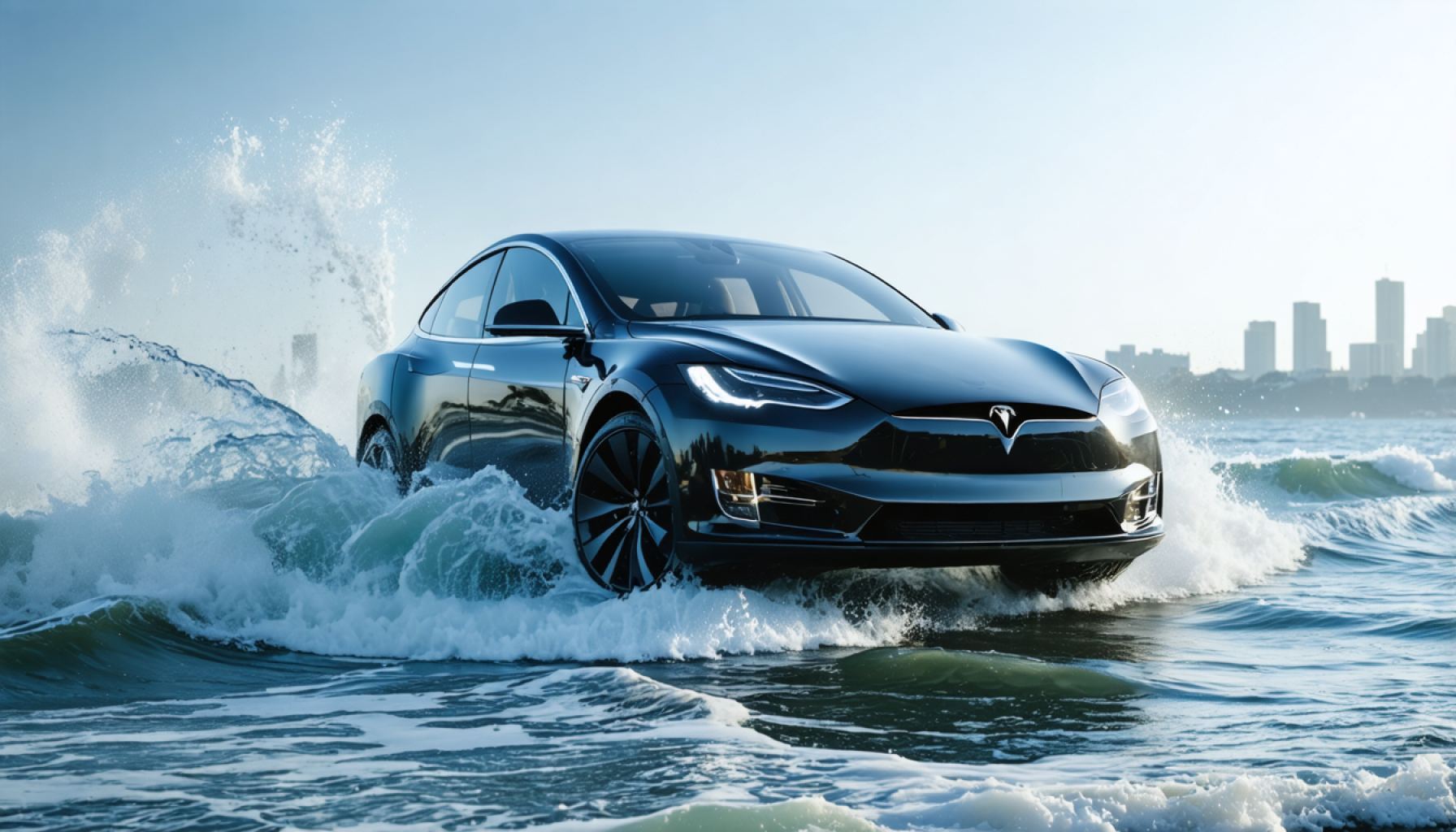- Tesla faces significant challenges, including declining demand and sales, which are exacerbated by key executive departures.
- Government incentives, vital to Tesla’s success, face scrutiny, potentially weakening its market position both domestically and internationally.
- The company is entangled in a lawsuit with OpenAI, adding legal complexity to an already difficult month.
- In Canada, a $43 million rebate scandal further tarnishes Tesla’s reputation, while production delays for the Roadster 2.0 and Tesla Semi dampen excitement.
- As competition grows, Tesla’s dominance in the electric vehicle market appears increasingly vulnerable, revealing the need for strategic adaptability and integrity.
- The central question persists: Can Tesla navigate these turbulent waters and maintain its pioneering role in the electric vehicle industry?
Tesla, once the harbinger of the electric vehicle revolution, navigates choppy seas this April. The company faces a storm of setbacks that challenge even its charismatic leader, Elon Musk. At the heart of Tesla’s troubles lie plummeting demand and faltering sales, issues compounded by top executives abandoning ship. The exodus hints at deeper unease within the company, leaving investors and admirers questioning the once unassailable brand. Government incentives, crucial to Tesla’s growth, face scrutiny both in the United States and abroad, threatening to weaken the very foundation that bolstered its market position.
Beyond misfortunes on home soil, Tesla is embroiled in a lawsuit brought on by OpenAI, a beacon of artificial intelligence innovation. The legal battle adds another layer of complexity to an already tumultuous month. In Canada, the company faces a $43 million rebate scandal, blowing gusts of negative sentiment that cloud its reputation. Meanwhile, the long-promised Roadster 2.0 and Tesla Semi remain elusive aspirations, with production delays deflating excitement and trust.
Tesla’s self-inflicted wounds lay bare vulnerabilities once masked by visionary ambition and technological prowess. As increasingly fierce competitors close in, Tesla’s grip on the electric vehicle crown looks more tenuous. The aura of invincibility, once Tesla’s hallmark, now appears tarnished.
In these testing times, the takeaway becomes clear: even giants must tread carefully. Innovation alone does not secure longevity; holistic integrity, strategic adaptability, and relentless attention to evolving marketplaces do. As Tesla charts its course through April’s cataracts, a pressing question emerges: can Musk and his recalibrated crew steer through the storm toward a future still electric with possibility?
Tesla’s Tumultuous April: Navigating Challenges and Charting the Future
Current Challenges Facing Tesla
Tesla, once the undisputed leader in the electric vehicle (EV) market, is currently experiencing significant challenges. This article provides additional insights into the company’s current situation and offers practical tips, market trends, and predictions for the future.
1. Demand and Sales Decline: Tesla is experiencing a marked decline in demand for its vehicles. This can be attributed to increased competition, changes in government incentives, and evolving consumer preferences. According to the International Energy Agency, global EV sales increased to over 10 million units in 2022, indicating that while the broader market is growing, Tesla is losing its competitive edge.
2. Executive Turnover: The departure of several top executives from Tesla suggests possible internal issues. High executive turnover can destabilize a company’s strategic direction and morale, making it essential for Tesla to focus on leadership stability and retention.
3. Legal Woes: Tesla’s legal challenges, including the lawsuit with OpenAI and the $43 million rebate scandal in Canada, add to its woes by creating financial liabilities and damaging its public image.
4. Production Delays: The delayed launch of the Roadster 2.0 and Tesla Semi has frustrated customers and investors, further impacting trust and excitement around the brand. Timely execution of product launches is crucial to maintaining market leadership.
Market Trends and Industry Insights
– Increased Competition: Automakers such as Ford, General Motors, and newer entrants like Rivian are rapidly developing their EV lines, eroding Tesla’s market share. These companies are benefiting from diversified offerings and strategic partnerships.
– Government Incentives Shift: Shifts in government policy, such as changing tax incentives for EVs, impact Tesla’s pricing strategies and market demand. Tesla needs to adapt its global strategy to these changing regulatory environments.
– AI and Autonomous Driving: As Tesla continues to invest in AI technology, its collaboration with OpenAI and other tech firms remains crucial. However, legal entanglements could slow down innovation and partnerships.
Pros and Cons Overview
– Pros:
– Pioneering technology and brand recognition.
– Extensive Supercharger network facilitating long-distance travel.
– Strong environmental and sustainability image.
– Cons:
– High vehicle costs compared to competitors.
– Recent negative publicity and credibility issues.
– Dependence on Musk’s leadership style, which can be polarizing.
Future Predictions and Recommendations
– Enhanced Product Offerings: Tesla should fast-track the production of its delayed models to regain customer trust and market share.
– Leadership Stability: Ensuring a stable leadership team would help Tesla execute its strategic vision more effectively.
– Strategic Adaptation: Tesla should continue to diversify its product line and explore new markets to sustain growth.
– Collaborations and Partnerships: Forming strategic alliances with other technology firms could bolster Tesla’s technological capabilities.
Actionable Recommendations
– Monitor Market Trends: Keeping an eye on competitors and industry shifts can help Tesla innovate and remain competitive.
– Enhanced Customer Engagement: Improving communication and transparency with customers will improve brand loyalty.
– Focus on Sustainability: Reinforcing its commitment to sustainability could enhance Tesla’s brand and environmental image.
For more information about Tesla and its innovative journey, visit the Tesla website.
